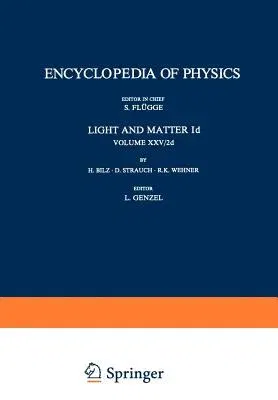H Bilz
(Author)Light and Matter Id / Licht Und Materie Id: Infrared and Raman Spectra of Non-Metals (Softcover Reprint of the Original 1st 1984)Paperback - Softcover Reprint of the Original 1st 1984, 10 March 2012

Qty
1
Turbo
Ships in 2 - 3 days
In Stock
Free Delivery
Cash on Delivery
15 Days
Free Returns
Secure Checkout
Part of Series
Handbuch Der Physik Encyclopedia of Physics / Optik / Optics
Part of Series
Handbuch Der Physik Encyclopedia of Physics
Part of Series
Optik / Optics
Print Length
602 pages
Language
English
Publisher
Springer
Date Published
10 Mar 2012
ISBN-10
3642464351
ISBN-13
9783642464355
Description
Product Details
Authors:
Book Edition:
Softcover Reprint of the Original 1st 1984
Book Format:
Paperback
Country of Origin:
NL
Date Published:
10 March 2012
Dimensions:
24.41 x
16.99 x
3.18 cm
ISBN-10:
3642464351
ISBN-13:
9783642464355
Language:
English
Location:
Berlin, Heidelberg
Pages:
602
Publisher:
Series:
Weight:
970.69 gm

